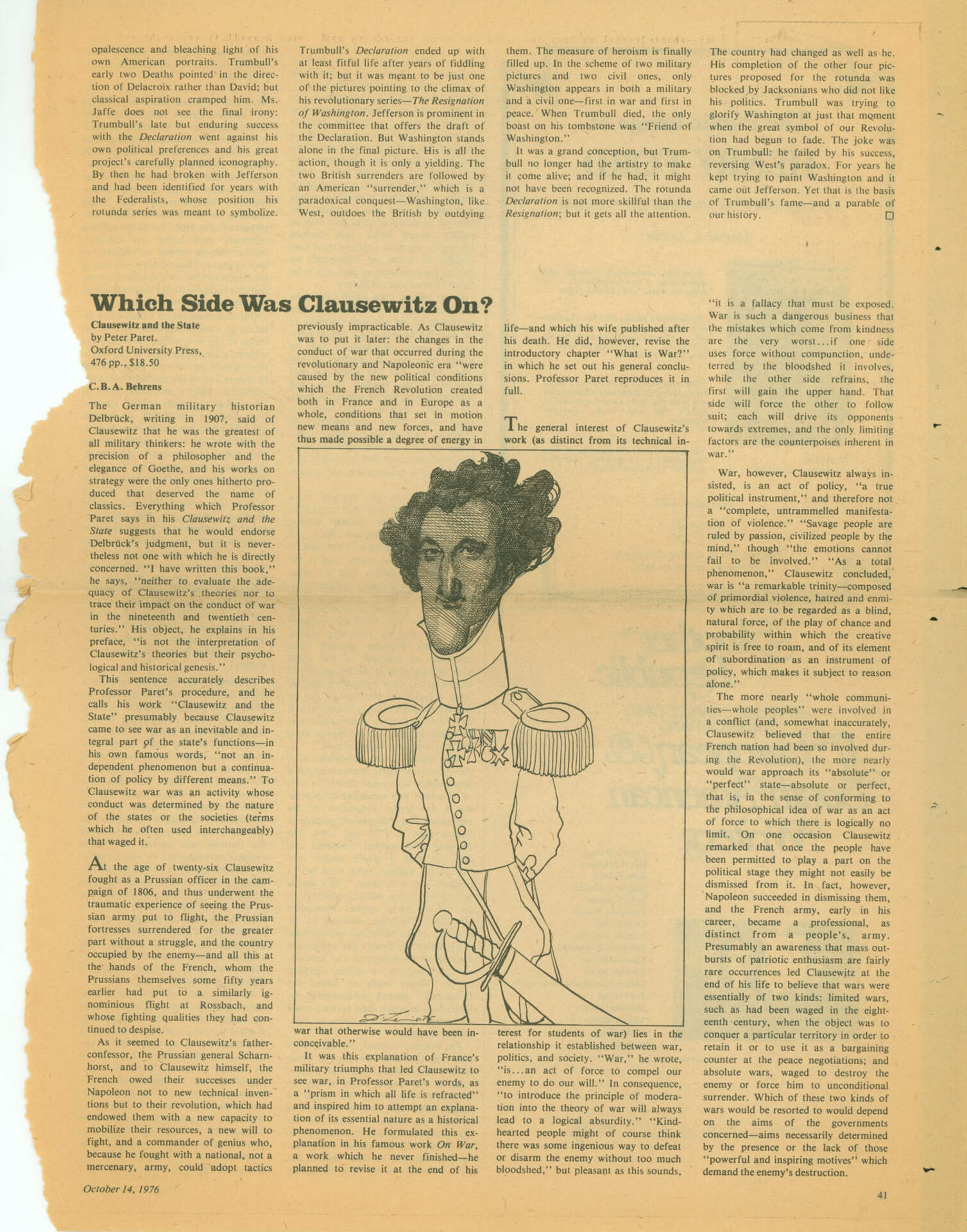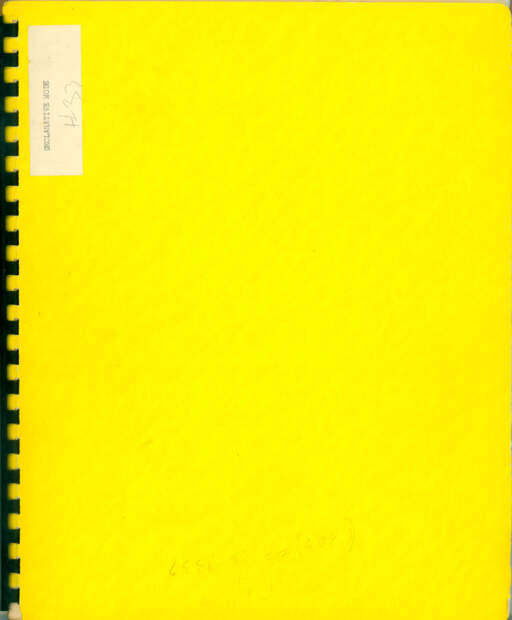Paul Sharits (1943-1993)Which Side Was Clausewitz On?
Article on paper
15 x 11 1/2 inches
Gift of Christopher and Cheri Sharits, 2006
opalescence and bleaching light of his own American portraits. Trumbull’s early two Deaths pointed in the direction of Delacroix rather than David; but classical aspiration cramped him. Ms. Jaffe does not see the final irony: Trumbull’s late but enduring success with the Declaration went against his own political preferences and his great project’s carefully planned iconography. But then he had broken with Jefferson and had been identified with the Federalists, whose position his rotunda series was mean to symbolize. Trumbull’s Declaration ended up with at least fitful life after years of fiddling with it; but it was meant to be just one of the pictures pointing to the climax of his revolutionary series—The Resignation of Washington. Jefferson is prominent in the committee that offers the draft of the Declaration. But Washington stands alone in the final picture. His is all the action, though it is only a yielding. The two British surrenders are followed by an American “surrender,” which is a paradoxical conquest—Washington, like West, outdoes the British by outdying them. The measure of heroism is finally filled up. In the scheme of two military pictures and two civil ones, only Washington appears in both a military and a civil one—first in war and first in peace. When Trumbull died, the only boast on his tombstone was “Friend of Washington.”
It was a grand conception, but Trumbull no longer had the artistry to make it come alive; and if he had, it might not have been recognized. The rotunda Declaration is not more skillful than the Resignation; but it gets all the attention. The country had changed as well as he. His completion of the other four pictures proposed for the rotunda was blocked by Jacksonians who did not like his politics. Trumbull was trying to glorify Washington at just that moment when the great symbol of our Revolution had begun to fade. The joke was on Trumbull: he failed by his success, reversing West’s paradox. For years he kept trying to paint Washington and it came out Jefferson. Yet that is the basis of Trumbull’s fame—and a parable of our history.


